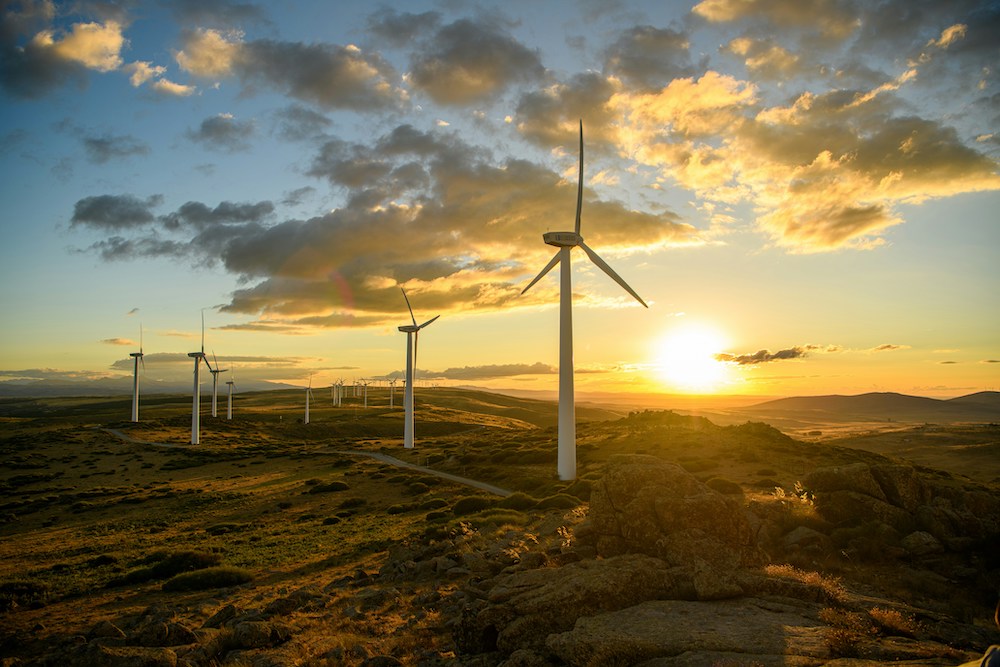
- Details
- By Chez Oxendine
- Energy | Environment
The nonprofit Alliance for Tribal Clean Energy announced a $100 million energy sovereignty fund aimed at breaking down financial barriers that have long stalled tribal clean energy projects.
Announced during the Clinton Global Initiative 2024 annual meeting in New York City on Tuesday, the new Indigenous Power & Light Fund for Energy Sovereignty is a collaborative effort between the Alliance and several leading philanthropic organizations, including the John D. and Catherine T. MacArthur Foundation, the William and Flora Hewlett Foundation, and the Lemelson Foundation.
The goal of the new fund is to provide predevelopment costs for tribal energy projects, such as feasibility studies, environmental reviews, and matching funds for federal grants. These costs often prove insurmountable for smaller or less wealthy tribes, stifling their renewable energy goals before they ever begin, according to Alliance CEO Chéri Smith.
Smith pointed to a flood of federal funding for Indian Country energy, but comparatively few ways to access it without outside investments, loans, or private donors. That’s where the Indigenous Power and Light Fund for Energy Sovereignty comes in, she said.
“There’s federal money out there, but you need funding to access it,” Smith told Tribal Business News. “It’s like being invited to a dinner where they’re going to give you $75, but everything on the menu is $100, and if you don’t have that $25, you can’t come to the dinner at all. So where do you get the $25? This fund is to cover the gap.”
The Alliance has hired Onna LeBeau, former director of the Office of Indian Economic Development, Department of the Interior, to lead the Indigenous Power & Light Fund. LeBeau brings extensive experience in economic development and federal tribal programs, which will be important in the fund’s rapid deployment of resources and support for tribal energy projects.
The organization will move quickly because it will be utilizing philanthropic funding rather than federal money, LeBeau said.
“We’re actually going to be able to get money out to tribes quickly, so we’re going to be able to see the deployment and impact of it a lot sooner,” LeBeau said. “Anything I can do to get money out to the tribes, that’s where my heart is.”
With the Indigenous Power and Light Fund officially announced, the Alliance is now working on designing its initial grant offerings, Smith said. At the moment, only grants are planned, but eventually the fund hopes to expand its financial offerings to things like zero interest loans and investments.
So far, the plan is for “tiered” grant awards based on tribal needs and initial capacity. A technical assistance team will help awarded tribes deploy their funds “effectively,” with an eye toward quickly achieving things like interconnectivity studies and environmental reviews, Smith said. The Alliance plans to award its first grants within roughly 90 days after the fund’s launch.
More than a third of the funding has been pledged, and the fund is on track to reach its initial goal of $100 million by the end of 2025, per an Alliance press release. Carrie Doyle, environment program officer at the William and Flora Hewlett Foundation, called the fund a “beacon of hope and a vital source of support for Native communities as they follow their own paths to a clean energy future.”
The sentiment was largely echoed by representatives from the two other headlining collaborators on the fund: MacArthur Foundation Senior Program Officer for Climate Solutions Kate Barnes said the fund’s launch was a “pivotal moment” toward energy transition for tribes. Joel Clement, senior program officer for the Lemelson Foundation, said the fund embodied a “bold commitment” toward addressing longstanding disparities in energy funding.
“With the leadership of the Alliance for Tribal Clean Energy, these catalytic funds have the potential to solve Tribal energy poverty and level the playing field for Native American tribes and Alaska Native communities seeking to thrive and lead the way on climate action in the 21st century,” Clement said in a statement.
That’s the goal, Smith said.
"By prioritizing tribal ownership and control, the fund ensures that the benefits of clean energy projects go directly to tribal communities, strengthening economies, self-determination, and true sovereignty,” Smith said. “Most importantly, these projects inspire hope in tribal communities, where hope is often scarce."
